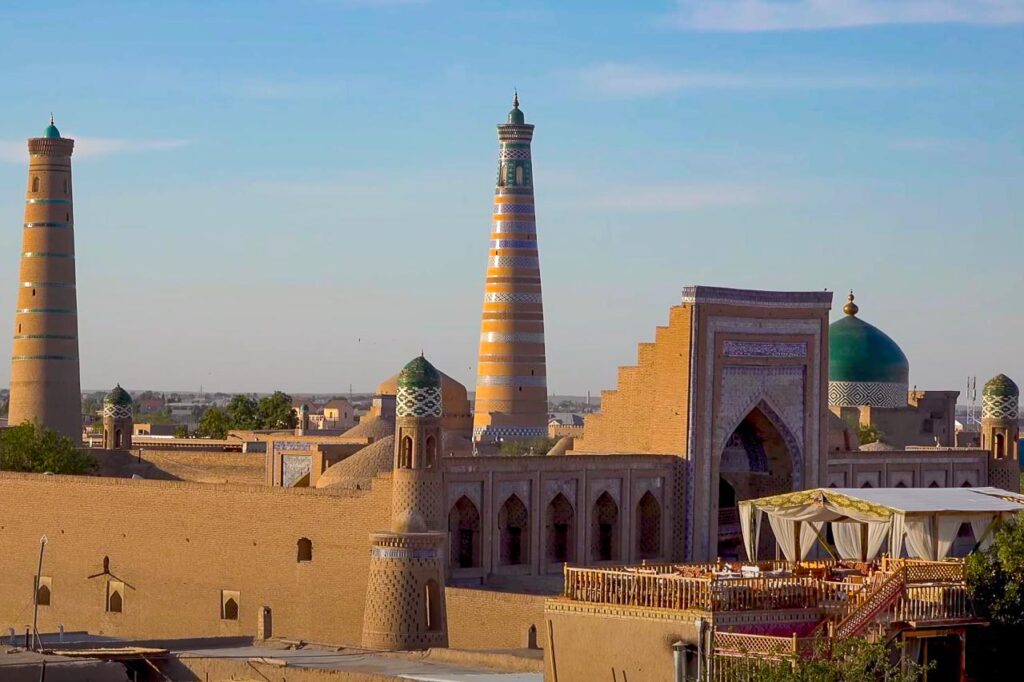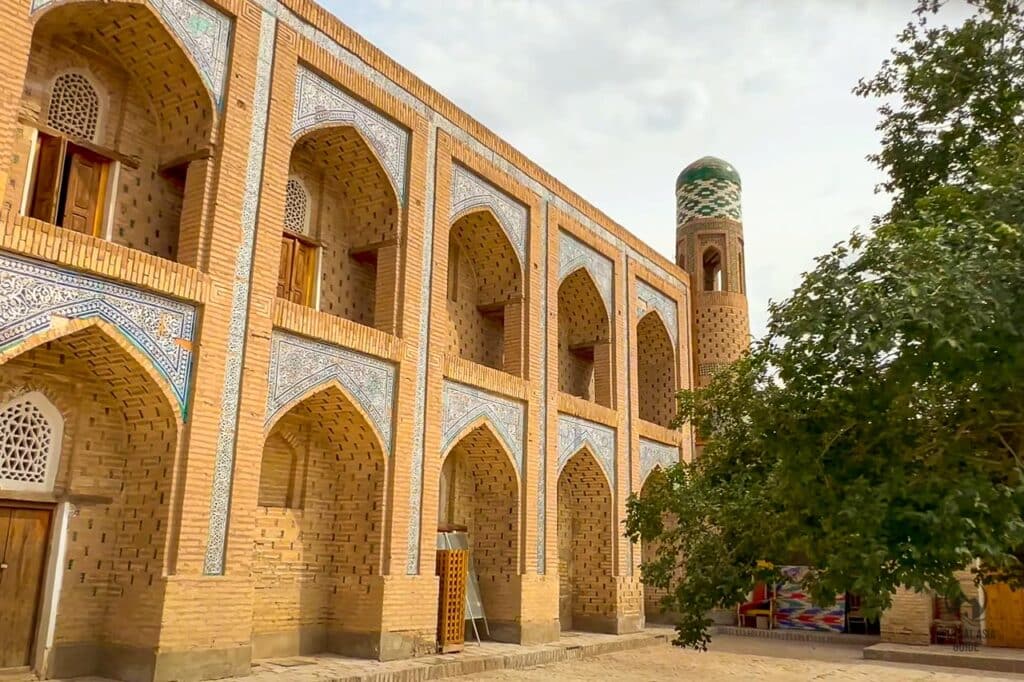Khiva Madrasahs
Madrasahs of Khiva
During the peak of Medieval Khiva, it was focused on developing religious education and religious debate. It was common for its wealthier residents to battle each other by building larger, fancier and more elaborate madrassas. Eventually, at the beginning of the 20th century there were a total of about 65 madrassas in Khiva and 54 of them within the inner city walls of Ichan Kala.
A collection of the most impressive examples is introduced here, although there are many more you will find just by wandering around in the streets of Khiva.
Mohammed Rakhim Khan Madrassah
Muhammad Rakhim-Khan madrasah is one of the largest in Khiva and the most popular madrassa in whole Central Asia.
Mohammed Amin Khan Madrassah
Mohammed Amin Khan madrassah, along with the unfinished Kalta Minor was intended to be the centerpiece of a grand new ensemble.
Matniyaz Divan Begi Madrasah
Matniyaz Divan-Begi Madrasah was built in 1871 in the center of Itchan Kala next to Muhammad Amin Khan Madrasah. Development of the structure was carried out by Muhammad Niyaz, the Minister of Finance of the Khivan ruler Muhammad Rahim Khan II. Next to the madrassah was established a covered bazaar under his direction as well. The creation of Matniyaz Divan-Begi Madrasah harmoniously blended traditional architecture of the region with the latest 19th-century trends. Since 1979, a restaurant has operated in Khiva’s Matniyaz Divan-Begi Madrasah.
Matpana Baya Madrassah
Formerly intended as a place of Islamic instruction in 1905, the Matpana Baya madrassah was converted into a museum of atheism under the Soviets. After Uzbekistan’s independence, it was transformed into a museum of religion. The madrassah cells house exhibits displaying cavemen, ancient and polytheistic religions as well as mono religions. The former communist exhibits have been taken away, leaving a space that has yet to be ideologically loaded.


Kutlug-Murad Inaka Madrasah
Kutlug-Murad Inaka also written as Qutlugh Murad Inaq madrassah is settled on the east side of the Ichon Qala, directly to the northwest of the Ak Mosque and opposite the Alla Kuli Khan Madrasa. It was built by Kutluk Murad Inaq, the uncle of Alla Kuli Khan (the third Khan of Khiva 1825-1842) and houses his tomb.
According to legend, a person who dies outside of Khiva’s walls (Kutluk Murad Inaq was murdered by a rival) could not be buried within the city, hence, when he died outside, part of the city walls had to be removed to avoid this restriction.
Allakuli Khan Madrassah
Allakuli Khan madrassah was built in the middle of the 19th century by the order of Alla-Kuli-khan in 1834-1835. The structure stands between the covered bazaar Tim and the eastern gate of Palvan-Darvaza.
The madrassah is truly impressive and striking with its beauty and grace. The structure is designed with the painted majolica in black and white and blue tones, covering vertical surfaces, semi-arches and false structures. Madrasah has a rectangular shape, which has 99 cells. The portal is traditionally split into two parts: the right is the mosque, and on the left lies a large classroom. Earlier, there was a library on the first floor, which stored books for all students of Khiva. Now it is once one of the largest madrasahs of Khiva and serves as a museum of the history of medicine named after Abu Ali ibn Sina.


Khojamberdibai Madrassah
Hojashberdibiya Madrasa is the oldest madrasah in Khiva as parts of it date from 1688. The Khojambedibai madrassah stands near the the eastern gate Palvan-Darvaza, in front of Allah Kuli Khan Madrasah.
A significant rebuild for Allah Kuli Khan in 1834 split the site in two and the new layout was supposed to resemble a saddlebag. It was eventually nicknamed Hurjun because it resembled a leather saddlebag of the same name. The madrasah includes two yards of different sizes, a Darwaza khana separating them, 16 hujras and a domed square shaped room called darskhana.
Shergazi-Khan Madrasah
The Shergazi Khan madrassah is located in the very center of Ichan Kala, on the south part of the Pakhlavan-Mahmud mausoleum. It was built in the first quarter of the 18th century, during the realm of the Shergazi-khan (1715-1728). It is told that this majestic madrassah was constructed by 5 000 Persian slaves that were captured by Shergazi Khan on an attack at Meshed in 1718.
The slaves were guaranteed their freedom once the madrasah was complete but fearing that he would deny the deal they murdered the project manager inside the unfinished madrassa in 1720. An inscription over the madrassas door reminds us what were purportedly his final words: ‘I accept death at the hands of slaves’. This madrasa’s most famous student was the Turkmen poet Makhtum Kuli.